What 3 questions are SwimTrek coaches asked most often?
Every year we run Coaching Camps around the world. We speak to every species of swimmer you could imagine. Of course, our world-class coaches hear all kinds of questions too.
In this blog, we've picked out 3 questions that keep coming up. We've tried to answer these as best we can, drawing on the wisdom of our coaches and guides.
It doesn't matter if you crest the water and glide like a sailfish, all our techniques are improved with a tune-up.
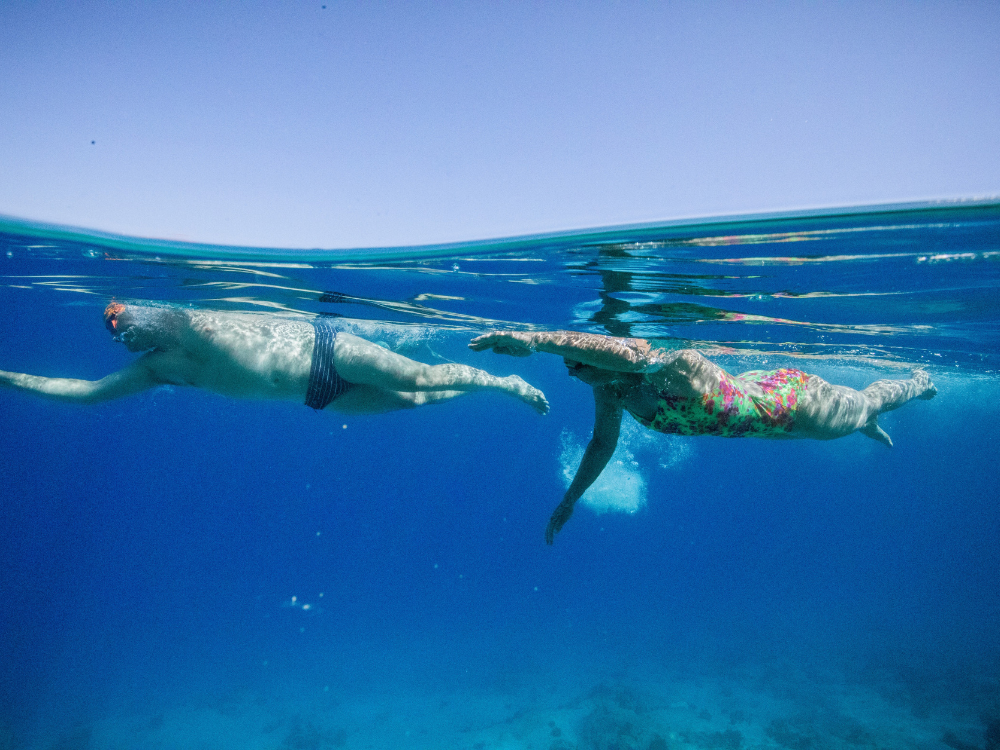
To swim faster you need to work on your technique. Lap times drop when you're efficient with your energy. Conversely, bad technique raies your heart rate and slows you down. It might sound counter-intuitive, but the best way to start is slow.
Focus on repeatable actions and keep it simple.
You need a smooth technique before you can increase your speed. So, focus on a few key areas: stroke angle, body rotation, breathing, and turns. Drills will help you to identify and tune specific parts of your swimming technique. Then you can throw in strong wall kicks and other tricks to reduce drag in the water.
'Focus on a few key areas: stroke angle, body rotation, breathing, and turns...'
Let's answer your 3 most frequently asked questions:

"How Do I Improve My Breathing Technique?"
It should be the easiest thing (we've been doing it all our lives), but breathing is difficult. In fact, it's one of the most common problems swimmers struggle with. Poor form can often be attributed to bad breathing.
Again, it's important to start slow as you learn to improve your breathing. Many swimmers use a snorkel to get started. Lock in a strong technique and don't worry about rolling up to gulp in air. Only introduce the breath when you're confident.
Remove the snorkel every 4 laps or so. Inhale as you surface and exhale underwater. There's a rhythm you need to gradually find. Let all the air out from your lungs when you're looking at the pool floor. Then take a full breath as you come up on the high side.
Beginners may need to take in a breath after every stroke. Over time your endurance will improve. At which point you can learn to breathe on alternate sides after 3 strokes: 'One, two, three... breathe!'
If you lift your neck this shifts your body out of an aligned position. So, imagine your spine is moving as a fixed-axis. Stare downward and roll your shoulders as you reach. The arm extends for the catch and naturally you roll onto that side. Sneak the breath in as your arms swings forward.
You can kick strongly, hold out one arm in a fixed position and swim slowly with the other to hone this technique.
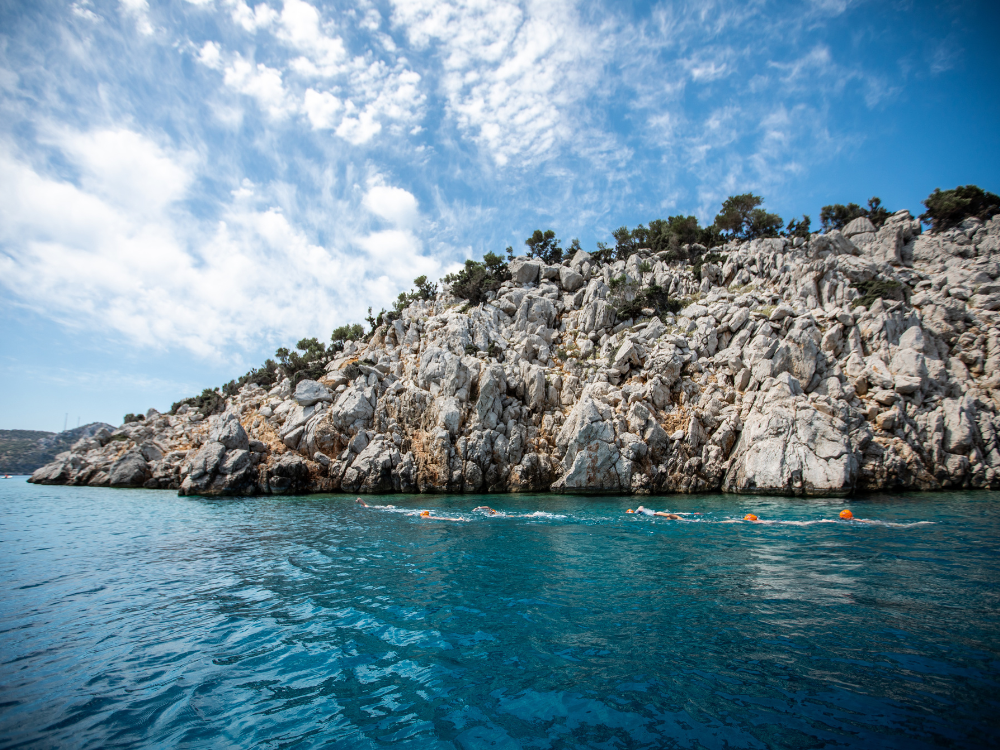
"How Do I Transition From Breaststroke To Front Crawl?"
In the 1800s, front crawl was practicised by indigenous peoples across the South Pacific and the Americas. In other places, like Britain and the US, it was called 'uncivilised' and snubbed.
The more ponderous, head-up motion of breaststroke can be a happy refuge. Yet front crawl is now clearly recognised as a faster and more efficient stroke. If you really want to swim your way out of a crisis, you get your head down, bust out your best crawl and fly like a torpedo.
For those of you looking to make the transition, your stroke starts when your lead arm enters the water. That side of your body is called the low side. It points pretty much at the pool bottom. While your high side is raised and the other arm, which just ended its stroke, returns overhead to extend in front of you.
'Power in the water is achieved from drive applied by the high side of your body...'
You need to keep a high-elbow catch before you begin each stroke. This means your elbow is close to the water's surface as you reach out and extend your arm. Your forearm is then also in an appropriate position to catch the water and apply more propulsion with less resistance.
Power in the water is achieved from drive applied by the high side of your body. When you throw your high-side arm forward, rotate your hips and torso to gain an efficient glide. While your low-side arm pulls underwater to work with your rotation for extra acceleration.
Your eyes should ideally be pointed down at the bottom of the pool, or into the deep water. This cuts drag and keeps your torso high, which means less strain on your neck and lower back.
Generally, fewer strokes is better and you want to aim for a high distance per stroke (DPS). The best swimmers can glide across a 25-metre pool in 7 strokes, conserving momentum.
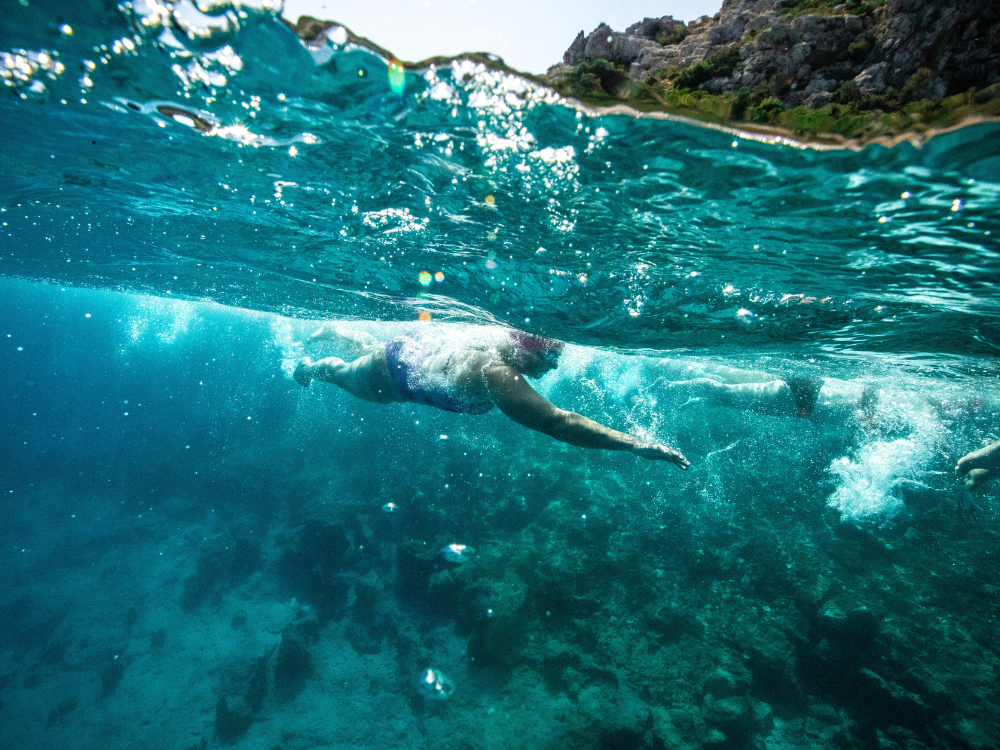
"How Do I Become A More Efficient Swimmer?"
Finally, the third question our coaches are asked has to do with efficiency. It's interesting to note that water is much denser than air (1000 times moreso, in fact). So, we need to slide our bodies through as narrow a gap as possible to reduce drag.
We return again to talking about a central axis. This extends from the crown of your head to the opposite pool end. Always rotate your body on this axis. Extend your leading arm as far as you can and keep your abs and lower back muscles taut. This will gift you more propulsion from your arms and legs.
If you swim too fast you can effectively sabotage your form. So, it's important to take time to swim along the axis and extend your catch in a relaxed motion. Don't flail your arms and fight the water. You might also benefit from building up your pace gradually as well.

All this isn't to say you should take it easy all the time. When it comes down to it, you aren't going to improve if you don't dig in and focus on your endurance. One way to make your sessions more difficult is to mix it up. Use different kicks, strokes and experiment with various paces.
You might even like to add extra resistance to build strength and efficiency. Try weights, a pull buoy, or parachute to work your lungs and hone those muscles. These resistance tools can also give you a psychological edge. Imagine yourself walking with a spherical rock in both hands - it's much easier to move once you drop the rock!
Harder exertions will build your swimming skills and improve your speed. You don't always have to swim for a long time, but focus on drills to hone areas of your technique that slow you down. The best way to identify these areas is to swim with a semi-aquatic buddy, or, even better, enlist the support of a coach.
Remember To Stay Healthy
It goes without saying that your health is about more than exercise. Sleep well, eat right, stay hydrated and take time to focus on your mental wellbeing too. Sunday meal prep is underestimated and you need to always be rested and recovered.
Diet right, maintain a healthy body and you'll have more energy next time you hit the pool, or open water. The body is an evolved machine that needs to be treated right. Fuel it, care for it and don't chuck it into the chop unless it's well-oiled, prepped, and ready to run.



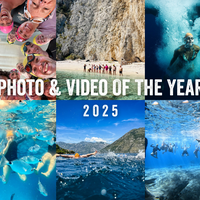
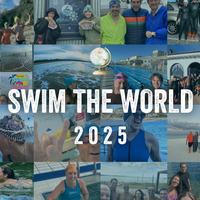

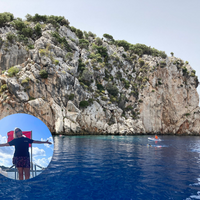

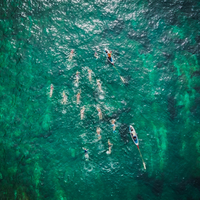


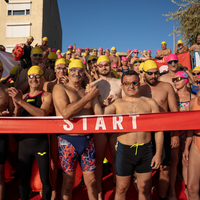
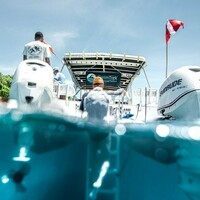
Modelsbank Agency @modelsbank
NICE POST! THANK YOU FOR SHARING...
posted over 1 year ago